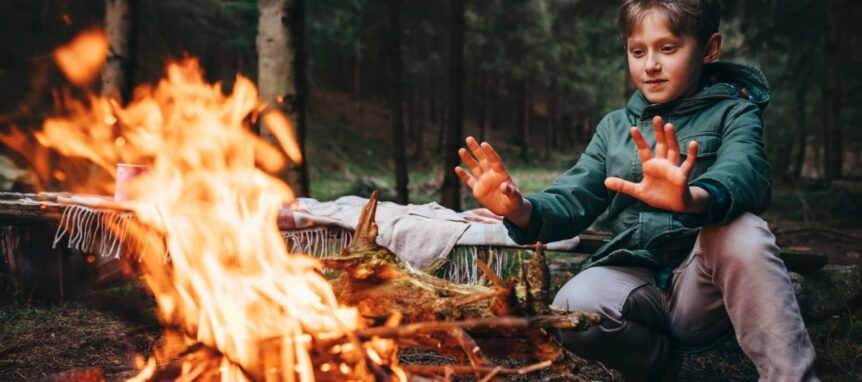The flicker of a fire, the crackle of wood, and the soft murmur of voices telling tales—there’s something magical about gathering around a campfire. For generations, campfire storytelling has been a cherished tradition at summer camps, offering more than just entertainment. It serves as a meaningful tool in child development, building imagination, empathy, language skills, and emotional awareness. Storytelling around a fire encourages children to engage with others, process experiences, and contribute their own voices in a supportive, communal space.
Let’s explore how this age-old tradition nurtures a wide array of developmental benefits that continue to shape young minds long after the embers fade.
Strengthening Communication and Language Skills
Storytelling helps children become better communicators. Whether they’re listening to tales or sharing their own, they’re actively practicing comprehension, vocabulary development, and narrative structure. Children exposed to frequent storytelling develop richer vocabularies and more complex sentence structures. Telling stories also helps kids learn the art of pacing, tone, and emotional expression—key components of effective communication. Sitting around the campfire provides a low-pressure environment where kids feel encouraged to speak up and share. As they listen to others, they learn to articulate their thoughts more clearly, contributing to both verbal fluency and listening comprehension.
Boosting Imagination and Creativity
Campfire storytelling stretches the imagination. In a digital world full of screens and pre-made content, using words and ideas to craft mental images fosters creativity in a powerful way. Children are inspired to create characters, invent new worlds, and develop plots. Without visual aids, they must use their own minds to “see” the story, which helps sharpen their creative thinking. When encouraged to make up their own stories, children learn to brainstorm, make decisions about what happens next, and think outside the box—skills that extend into school projects, writing assignments, and everyday problem-solving.
Fostering Empathy and Emotional Awareness
One of the most powerful aspects of storytelling is its ability to build empathy. As children listen to stories that include different characters, challenges, and emotions, they start to understand perspectives outside their own. Hearing stories about fear, bravery, sadness, or triumph allows kids to relate to and process complex emotions. This emotional exposure contributes to better social understanding and emotional intelligence. Storytelling helps children recognize their own feelings and those of others. It creates a safe space to discuss difficult emotions or events, which can be especially valuable during a camp experience where kids may feel nervous, homesick, or challenged.
Creating a Sense of Community and Belonging
Gathering around a fire to share stories creates connection. Everyone becomes part of the experience—whether they’re telling a spooky legend, recounting a funny mishap, or just listening quietly. Children feel a sense of inclusion and camaraderie during these shared storytelling moments. Storytelling traditions become part of the camp’s identity and culture, giving children a sense of belonging and purpose. The shared act of storytelling bonds children not only with each other but also with their camp counselors and environment. This contributes to stronger relationships and a lasting sense of community.
Building Confidence and Public Speaking Skills
For children who may be shy or hesitant to speak in front of others, storytelling around the campfire can be a gentle gateway into public speaking. The informal setting removes some of the pressure found in classroom presentations. Kids gain confidence as they learn that their voice matters and that their ideas are worth sharing. Even short contributions—like telling the ending of a story or offering a silly twist—can build self-esteem and encourage kids to take ownership of their communication.
Honoring Tradition and Cultural Learning
Storytelling is one of humanity’s oldest forms of education. Campfire tales often include myths, legends, and traditional narratives that help children connect with culture, heritage, and history. Storytelling introduces kids to different cultures, values, and customs. It encourages respect for diversity and helps preserve oral traditions that might otherwise fade. Children also learn how storytelling can be used to pass down wisdom, teach lessons, and explain the natural world—all in a format that feels alive and exciting.
The Lasting Impact of Campfire Moments
The stories told around a campfire may fade from memory, but the developmental effects last much longer. Through storytelling, children become more expressive, thoughtful, and connected human beings. They learn to use their voices, to listen closely, and to empathize with others. The campfire becomes a classroom with no walls—a place where lessons are illuminated by firelight and carried in the heart.
At Camp Live Oak, storytelling is woven into the fabric of camp culture—offering campers opportunities to grow in confidence, creativity, and connection. To learn more about our programs and how we support child development through meaningful outdoor experiences, visit our contact page.

